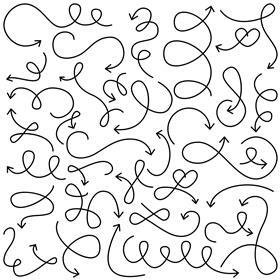Web watch: Tony Tooth looks at some websites that may be of interest to chemistry teachers
Periodic Videos
Having first visited this site two years ago I thought it was time for a revisit and things have certainly moved on; videos are now available (by clicking the symbol on the Periodic Table) for all 118 elements. For elements 113-118 the videos are interesting presentations by Professor Martyn Poliakoff or one of his colleagues explaining how to use the Periodic Table to predict these elements' properties and discussing the principles behind their production. Amongst the recently updated videos is an excellent new presentation on fluorine, including a look at liquid fluorine and the reactions of fluorine with carbon, iron, cotton wool and sulfur as well as explanations of the strength of its bonds to other elements and the action of fluoride in toothpaste.
To celebrate their second anniversary, the team present a series of molecular videos. Amongst these are: a discussion of the preparation of 'planar methane'; a fascinating and topical discussion of crude oil in the context of the Gulf of Mexico spill; and a couple of fun experiments with sulfuric acid - including the best example of sulfuric acid plus sugar that I've seen. The videos are typically between four and seven minutes in length and provide excellent visual support for any element under discussion. They could also be a useful source of information for a student's extension work.
Curly Arrows and Mechanisms

This site from Aberdeen University was recommended to me. The Instructions and notes section contains some very clear notes and diagrams on a variety of mechanisms, including all the A-Level 'classics'. However, the real gem of this site lies in the Tutorials section. Accessing the Electronics 1 or Electronics 2 area reveals a series of 10 structures that need lone pairs and partial charges adding; guidance notes appear whenever a mistake is made to aid the learning process and full instructions with worked examples are also available. There is also a section of Curly arrows instructions and it is well worth spending a few minutes here before moving onto the examples where clicking and dragging draws curly arrows to complete mechanisms. Again, guidance notes appear whenever there is an omission or mistake and it is not possible to move on until each section is completed correctly. The use of resonance structures may cause some confusion for A-Level pupils and there are a few inconsistencies - such as the need to draw the curly arrow from the Br-Fe bond to the -H in the second stage of the bromination of benzene but from the lone pair on O to the -H in the second stage of nitration. Overall, however, this is an excellent instructive and revision tool of a skill that often causes problems for students answering exam questions.
If you know of any websites that should be reviewed in Education in Chemistry, then e-mail the title or URL to TonyT@kings-ely.cambs.sch.uk.






No comments yet